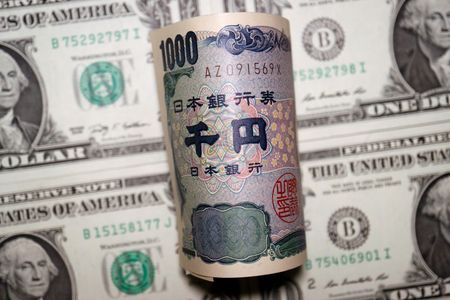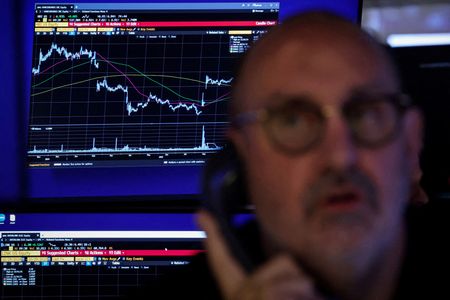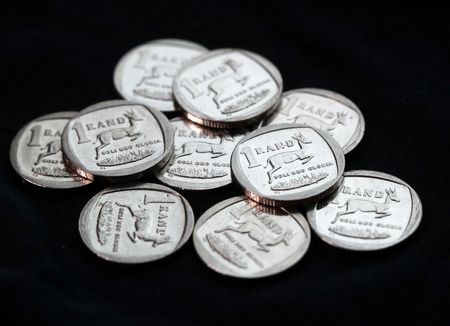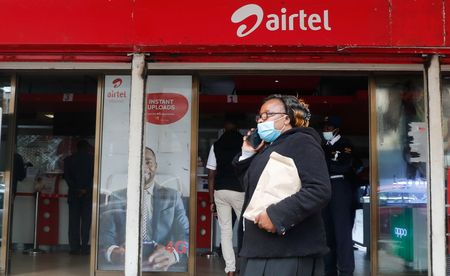By Laura Matthews and Joice Alves
NEW YORK/LONDON (Reuters) -The dollar rose against the yen on Wednesday, with the Japanese currency falling to a 10-month low after Finance Minister Satsuki Katayama said Japan’s new government was closely monitoring markets.
Japanese government ministers including Katayama met Bank of Japan Governor Kazuo Ueda on Wednesday. The yen fell after comments by Katayama, who said the government was closely watching the market “with a high sense of urgency”.
The currency has been falling on market expectations that Prime Minister Sanae Takaichi’s new administration will deliver a huge spending package backed by low interest rates.
“From a short-term point of view, the yen continues to underperform. It’s deviating quite significantly from underlying fundamentals,” said Shaun Osborne, chief FX strategist, Scotiabank.
“It’s certainly on the radar for Japanese officials. We may be moving into a range here where stronger protest from the Japanese government becomes a distinct risk here.”
Meanwhile, the greenback was stronger against most major peers like the euro and sterling as traders consolidated ahead of the release of the Federal Reserve’s October meeting minutes. Traders are hoping it and the upcoming non-farm payrolls will provide clues about the potential for an interest-rate cut next month.
INTERVENTION RISKS WEIGH ON YEN
The yen fell 0.62% to 156.50, after hitting its lowest against the dollar since January.
The inauguration last month of Takaichi, who is known as an advocate of expansionary fiscal and monetary policy, has complicated the BOJ’s efforts to gradually push up still-low interest rates.
The Kyodo news agency reported Japan’s stimulus package could exceed 20 trillion yen ($129 billion) and be funded by an extra budget of around 17 trillion yen.
Matt Weller, global head of market research at StoneX, sees more weakness in store for the yen.
“Anytime you see yields rising and the currency falling at the same time, that tells us that global investors are starting to lose confidence in that country’s situation as a whole,” said Weller.
“We are still waiting on that fiscal package that the new prime minister is expected to announce in coming days. It seems like traders are getting ahead of that, thinking it could be large, that it could be deficit spending that increases Japan’s already massive debt load.”
BOE EXPECTED TO CUT RATES IN DECEMBER
In Britain, consumer price inflation fell to 3.6% in October, from September’s joint 18-month high of 3.8%, as expected by the BoE and economists polled by Reuters, official figures showed on Wednesday.
UK inflation data cemented expectations that the BoE could cut interest rates in December.
Sterling was down 0.52% against the dollar at 1.3075, briefly touching its lowest since Friday, when British markets were whipped around as speculation swirled around the highly-anticipated November 26 budget, which remains the key event for sterling this month.
The dollar index, which measures the greenback’s strength against a basket of six currencies, edged 0.45% higher at 100.03. The euro fell 0.35% to 1.154.
Fed funds futures are pricing an implied 48% probability of a 25-basis-point cut at the December 10 meeting, compared with a 42.4% chance a day earlier, according to the CME Group’s FedWatch tool.
Another test will come with the delayed release of Thursday’s non-farm payrolls data for September, after initial jobless claims data released on Tuesday showed the number of Americans on jobless benefits surged between mid-September and mid-October.
“Payrolls tomorrow is probably going to show some signs of job growth but not necessarily job strength,” said Osborne. “It’s going to have to be a very good print tomorrow to give the dollar a significant lift.”
(Reporting by Laura Matthews in New York and Joice Alves’ Additional reporting by Ozan Ergenay in London; additional reporting by Gregor Stuart Hunter in Singapore; Editing by Alex Richardson, Alexandra Hudson)










